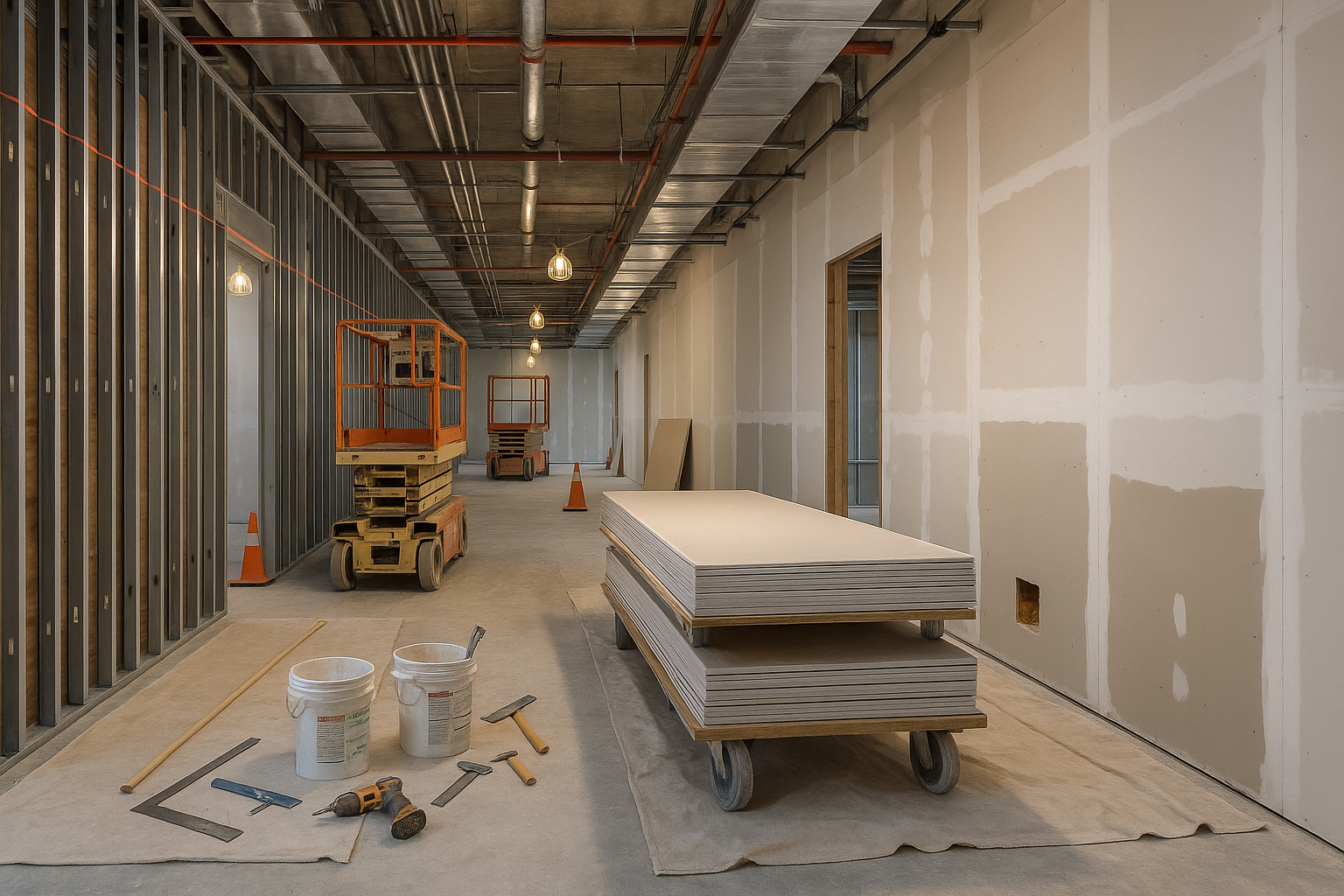
Translating drywall scope from an estimate to field execution is one of the most critical handoffs in commercial construction. A well-crafted estimate can fall apart in the field if the team doesn’t clearly understand what was priced, where it applies, and how it should be built. For architects, engineers, and general contractors, the goal isn’t just to estimate accurately—it’s to communicate that scope in a way that field teams can execute without delay or confusion.
Drywall is complex. Between wall types, fire ratings, acoustical assemblies, and sequencing, the install plan isn’t always obvious from the drawings alone. Common communication breakdowns include:
These issues result in rework, schedule delays, and unnecessary RFIs. That’s why it’s critical to have a structured approach to scope communication—especially for drywall, where many design decisions require field verification or adjustment.
Platforms like Active Estimating streamline the transition between estimation and field by enabling visual, segmented, and traceable drywall scope communication.
Drywall estimators using model-based takeoff systems can export plan overlays and visual snapshots that reinforce the scope. By capturing these outputs during estimating, teams can hand off:
This visual storytelling enables the field team to build exactly what was priced—improving productivity, reducing questions, and tightening alignment between budget and build.
Using advanced drywall estimating software, estimators can embed scope commentary, labor assumptions, and unit breakdowns into the documentation. These annotations serve as a reference point during layout and QA/QC checks in the field.
Scope communication shouldn’t be one-directional. Leading contractors use field feedback to refine future estimating assumptions. Crews can flag discrepancies between drawings and reality, which get documented and tracked in systems like Active Estimating for future cycles. This iterative loop builds trust, reduces future risk, and improves accuracy job after job.
Even the most accurate drywall estimate fails if it's not communicated clearly. By combining structured takeoff logic with visual documentation and field-friendly formats, estimators ensure that their work becomes the roadmap for successful project delivery. Empowering field teams with accessible, annotated, and accurate scope data is the difference between “what was estimated” and “what gets built”—and it’s where the real value of good estimating is realized.
Contact Information:
Active Estimating
508 2nd Street, Suite 208
Davis
California
95616
Rich Schoener
richard@activeestimating.com
(877)
Schedule a personalized demo to see how Active Estimating can work for your specific needs.
